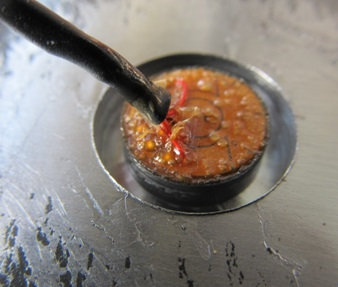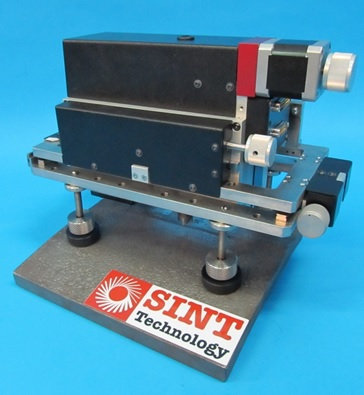Ring Core Method
Main strain gage methods used for measuring residual stresses include the Ring Core Method .
Ring Core method consists in drilling a core (approx. D = 18mm, d = 14 mm, h = 4-5 mm) around a special 3-element strain rosette. The core changes the initial strain allowing redistribution of the residual stresses originally existing in the material.
The alternative best method is the Hole drilling strain gage method, that consists n drilling a small hole (approx. 1.8 mm x 2.0 mm) into the centre of a special 3-element strain rosette
RING CORE METHOD: TEST PROCEDURE
The test procedure used for measurement of residual stresses by the ring-core method with the MTS3000 – RingCore system follows these steps:
- Apply a strain gage rosette with three overlapping grids in the test area
- Protect the strain gage leads with heat-shrink tubing
- Protect the rosette with protective coating
- Place the mechanical unit of the instrument on the area to be measured, lay the cables from the strain gage rosette through the hollow drilling spindle and secure the instrument with the magnetic clamps (or with proper adhesive)
- Center the crown milling cutter and strain gage rosette using the Webcam installed on the instrument and the centering software
- Zero depth is automatically detected by the electrical contact technique
- An annular groove is machined around the strain gage rosette in depth increments of 0.25 mm, and at each step the strain values measured by the three grids are automatically acquired.
To get the perfect measurement, the previous step is repeated to reach a minimum depth of 4 mm. To analyze the test results, the Eval –RC post-processing software is used. It allows to read correctly all the test data and to choose among different calculation options.
General Information Request
ADVANTAGES AND DISADVANTAGES BETWEEN THE HOLE DRILLING AND RING CORE METHOD
The Hole drilling method is a well known calculation method with a wide range of strain gages and accessories. It is also compliant to the ASTM E837 Standard. A couple of disadvantages are a lower depth of investigation and greater sensitivity to the error of eccentricity.
On the contrary, the best advantages of the Ring Core Method are:
- Higher depth of investigation
- Higher sensitivity to the strains
- Lower sensitivity to the eccentricity error
RING CORE STRAIN GAGE METHOD: MAIN OPERATIONS TO GET THE RESIDUAL STRESS MEASUREMENT
The main operations involved in performing a residual stress measurement by the RING CORE METHOD are:
- install a three-element strain gage rosette,
- center the drilling device with the center of the rosette,
- establish the initial contact between the work piece and drilling device (zero setting),
- drill a blind core in core depth steps,
- record strains released through residual stress relaxation by each grid of the rosette,
- calculate residual stresses from recorded strains by the method considered most appropriate (Differential method, Incremental method, Integral method).

MTS3000-RINGCORE: HOW DOES IT WORK?

The MTS3000-RingCore system is the only fully AUTOMATIC instrument in the world for determining residual stress by the Ring Core method.
The MTS3000-RingCore system consists of:
- a mechanical setup housing the drilling system, the advancing system and the optical system,
- an electronic control unit,
- an electronic drilling control unit,
- a digital strain gage amplifier,
- control (RSM-RC) and back-calculation software (EVAL-RC).
The mechanical – optical device is used for drilling the annular core (electric motor installed on board), for advancing in the material and for centering the drilling axis with the optical axis through the USB Webcam.
The electronic unit controls the USB connections, the stepper motor feed and the Zero setting function for determining the starting drilling position (BNC – Alligator clips cable).
To control the drilling unit during the test and to set the strain gage details (type, K factor, nominal resistance) and the drilling details, the RSM-RC control software is used.


